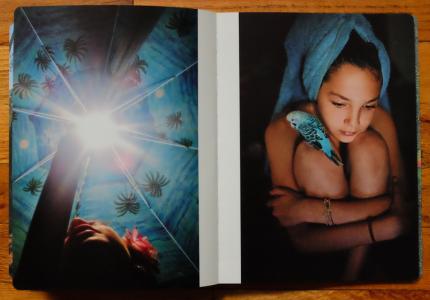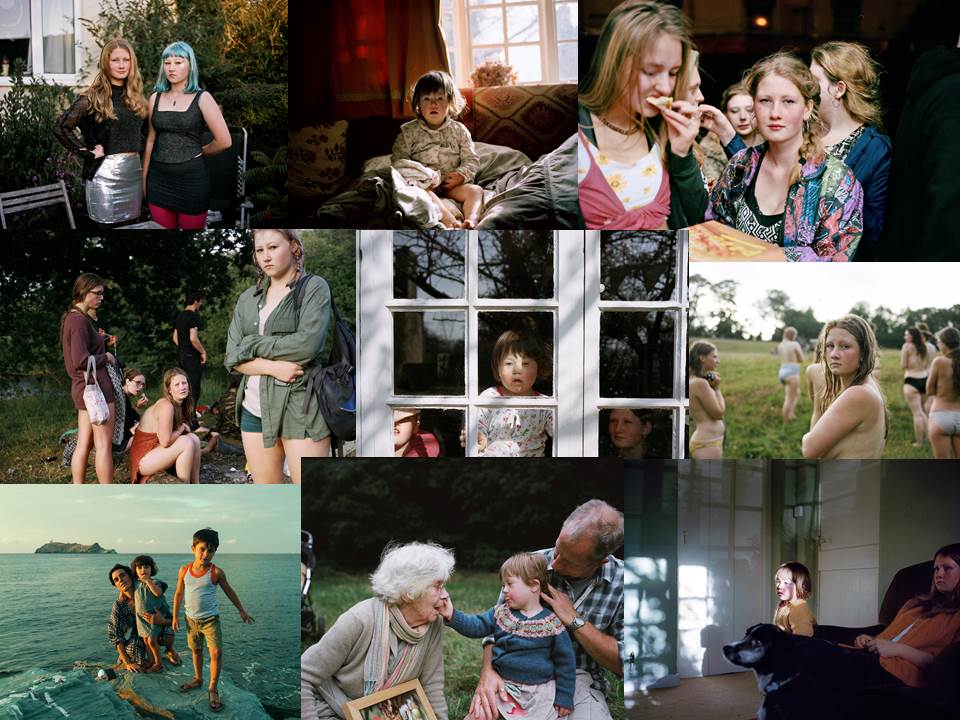SIAN DAVEY
http://www.bjp-online.com/2017/06/sian-daveys-intimate-portraits-of-her-daughters/
Sian Davey is a British photographer who likes to link psychology with her work. She began taking photos around the time of her dads death. According to Davey, she used photography as a way of making sense of her life. She says “I felt the need to create something, to make a sense of it.” Davey was a psychotherapist for 15 years before becoming a photographer in 2014. She describes becoming a photographer, as a “Instinctive move”
Davey’s work is very personal , for example, her series called Looking for Alice. In this series, Davey has a very tender look upon her daughter, who has syndrome. Davey has a very strong, loving relationship with her daughter, which is presented well in the series. A quotes from Davey says “Alice was born with Down’s Syndrome but is no different to any other girl or indeed a human being,” she adds. “She feels what we all feel. She needs what you and I need.” Davey uses her strong passion with this subject, and conveys it throughout the series. Here are a few examples from the series Looking for Alice.


The images in the series are environmental portraits with a spontaneous feel. Davey manages to capture the images at the moment they happen, rather then placing, and asking the figures to pose. I really like Davey’s style and the way she is able to capture the true personality of her daughters.

SAM HARRIS
http://www.samharrisphoto.com/

Sam Harris is an Australian photographer who taught himself as a teenager. He started his career in 1990 in London by photographing editorial portraits and sleeve art for numerous recording artists. His first huge success was creating the sleeve art for My Bloody Valentine’s Tremolo EP. Harris took a break from photography to focus on his family, and the later decided to journey to India. They decided to move and settle in rural Australia. During this process, Sam began experimenting within different aspects of photography. He decided to focus the camera inwards and looked towards his family. Harris now shoots his on-going family diary, and makes photo books to share his passion. Here is an example of a page within one of his photo books.
Harris did a project called The Middle of Somewhere, whilst he was with his family in Australia. He described the project as “A celebration of childhood and family life through a collection of simple yet beautiful moments of two sisters growing up in the remote Australian wilderness.” The project is taken from a visual family diary, containing images of his daughters while growing up. The work is a celebration of childhood, family life, love and the simplicity of life for Harris in Australia. He also describes the diary as “an attempt to preserve something of our lives living together” Here are a few examples of photos from the project, “Middle of Somewhere”



The images in Harris’s visual diary are observational photos with a classic interpretation within them. Harris has an interesting perspective on family life. He focuses on the tiny details, and the small, unique aspects that make the relationship with his daughters what it is. Underneath is an analysis of one of the many images within the visual diary.

Sian Davey and Sam Harris are slimier in many ways through their approach to Documentary Photography. They both use very personal subjects to focus their projects on. For example, they both used their daughters to take photos of in the projects I talked about. Both photographers use very natural settings to captures the image. None of the photos are taken in a studio, because Documentary photography is about capturing the scene exactly how it is. Visually displaying a real life event. However, there are still many differences within their approach that shows their individuality. Davey takes a more natural approach, capturing the whole scene. I believe that Davey’s photography is more old fashioned, in terms of how she uses natural, urban colors through her work. She also shows more of the environment within the image, so that it’s easy for the viewer to visualize where the photos was taken. Harris uses a more modern take on documentary photography compared to Davey. He likes to focus on the smaller details, showing none of the surrounding environment. I like this approach because it’s leaving more to the viewers imagination.


Overall a good artist reference, but here are a few things to consider to improve marks and move towards Level 6 – demonstrating exceptional ability. Our expectations and your real target grade is an A* this year”!
You include direct quotes from research and sources read but you don’t comment or respond to them in your writing. There is not much point in including using quotes if you don’t use them to expand an argument. Either use them to prompt a response for or against.
With your image analysis, it looks like you are restricted with the way that you use text boxes around the image and making it look very neat. It’s better that you allow yourself more space when you are writing about an image. Have a look at this blog post on Critical Analysis and adopt the methodology of:
We will do a lesson on how to analyse images more critically. have a look at this powerpoint.
https://hautlieucreative.co.uk/photo17a2/2017/01/25/critical-image-analysis/
In here click on my ppt: How to analyse an image
Describing, Interpreting, Judgement, Context – use these headings next time you analyse an image and write a good paragraph in each and include quotes/ references when appropriate.
To achieve top mark – level 6 – exceptional ability you must focus more on context/ theory as well as the other elements